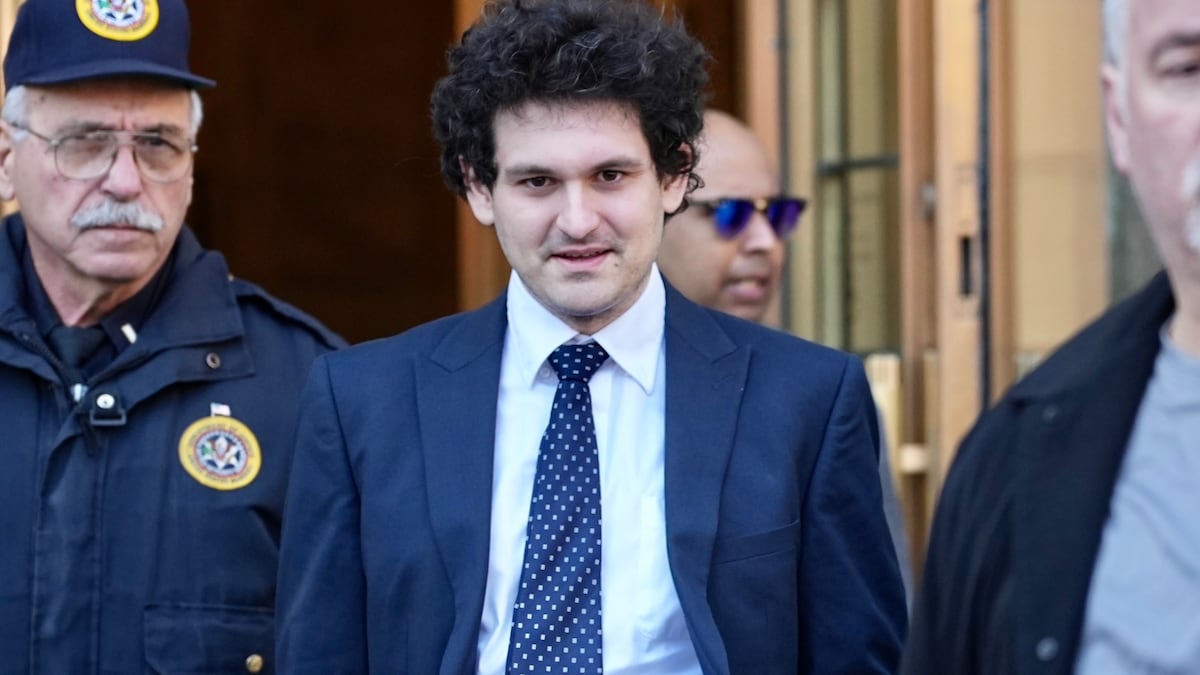- Analysis of FTX and Alameda bank statements, crypto wallets and databases showed customer money was misappropriated, according to an accounting professor who testified in court Wednesday.
- Jurors were also shown damning private messages Bankman-Fried exchanged with a reporter in a conversation he thought was private.
- The defence is running out of time to decide whether to call witnesses of its own.
Alameda Research clearly used FTX customers’ money to invest in startups and real estate and donate to political causes and charities, according to an analysis of the company’s bank records shared at the trial of Sam Bankman-Fried on Wednesday.
That analysis, which also looked at FTX-owned crypto wallets, also found that FTX used customers’ crypto to repay lenders and buy back FTX stock from arch-rival Binance.
Prosecutors have charged Bankman-Fried, FTX’s former CEO, with conspiracy to commit fraud and money laundering, among other things.
Bankman-Fried has pleaded not guilty, and his attorneys maintain he never set out to defraud investors and customers. He simply made honest mistakes amid a turbulent period in crypto markets and an ill-timed run on customer deposits, they claim.
But prosecutors insist Bankman-Fried, through his control of FTX sister company Alameda, used FTX as his personal piggy bank.
Three members of Bankman-Fried’s inner circle have pleaded guilty and are cooperating with prosecutors. In testimony over the past three weeks, they have all said FTX and Alameda misused customer money.
Following the money
On Wednesday, however, prosecutors tried to prove it, showing jurors dozens of flowcharts prepared by Peter Easton, a professor of accounting at the University of Notre Dame and the author of several textbooks on accounting.
Easton and a team from litigation consulting firm Brattle Group were tasked with tracing the flow of money customers deposited in FTX.
FTX was in the red since at least 2021, according to Easton’s analysis. At its worst, the deficit reached $9 billion: Customers had deposited more than $11 billion on FTX, but the company only had $2 billion on hand.
On Wednesday, prosecutors asked Easton about investments in Genesis Digital Assets, Anthropic, K5, and other firms that cost Bankman-Fried’s companies billions. The money “must have come from customer funds,” Easton said.
The line almost became a mantra, as prosecutors asked Easton about real estate investments, charitable donations, repayment of crypto lenders, and the purchase of FTX shares owned by Binance, one of the company’s earliest investors. In almost every case, a majority of the money came from FTX customers, Easton said.
“The prosecutor did an effective job on his direct examination of utilising [Easton] to show the jury the course of the customer deposits into FTX and out, in a very simple, straightforward way,” Carlo D’Angelo, a Texas-based criminal defence attorney who sat in on Bankman-Fried’s trial Wednesday morning, told DL News outside the courthouse in lower Manhattan.
Defence woes
On cross-examination, in the afternoon, defence attorney David Lisner tried to pick apart Easton’s analysis, suggesting it may have been flawed because it didn’t make a distinction between principal, interest and collateral when looking at repayments to crypto lenders, for example.
Whether those payments were for principal, interest or collateral, however, the assets came from FTX customers, Easton said.
Lisner also suggested Easton’s analysis was flawed because it only accounted for FTX and Alameda finances during a time period chosen by prosecutors.
“Would your conclusion about which assets were used be affected if you used longer or shorter date windows?” Lisner asked.
“Absolutely not, and I’ve checked that out,” Easton said.
It wasn’t the only loss the defence suffered in court Wednesday.
Prosecutors showed jurors a now-infamous series of messages between Bankman-Fried and Vox reporter Kelsey Piper.
In those messages, Bankman-Fried suggested the do-gooder persona he cultivated while head of FTX was a sham intended to bolster his public image, and that former FTX executive Nishad Singh was “ashamed and guilty” because customers couldn’t withdraw their deposits.
The defence objected to their presentation in court.
“These are just off-the-cuff musings about past events that we think were devoid of context that could be substantially misconstrued by the jury,” defence attorney Christian Everdell told Judge Lewis Kaplan, only to be overruled.
In other business, Bankman-Fried’s attorneys said they had yet to decide whether to call witnesses of their own once the prosecution rests next week. They were instructed by Kaplan to reach a compromise with prosecutors, who wanted an answer by Monday; Mark Cohen, one of Bankman-Fried’s attorneys, had asked for a Tuesday deadline.
Aleks Gilbert is DL News’ New York-based DeFi Correspondent. Got a tip on the SBF trial? Reach out to him at aleks@dlnews.com.
